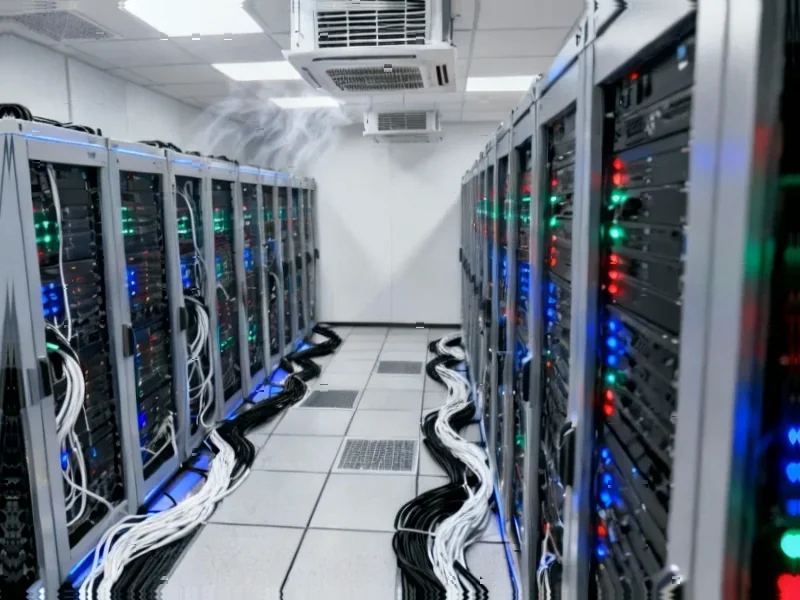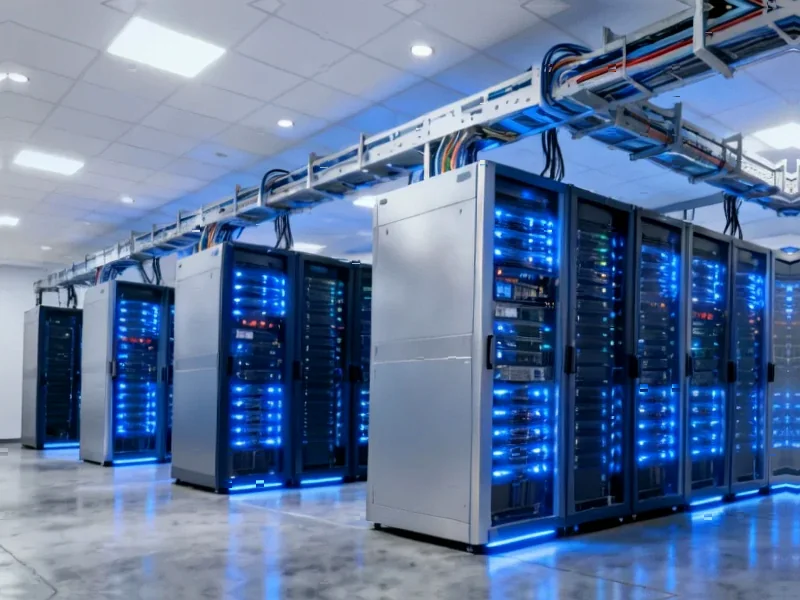According to Forbes, NVIDIA’s recent $5 billion investment in Intel represents just one piece of an extraordinary capital surge in AI infrastructure, with nearly one trillion dollars in commitments surfacing through October 2025. The AI buildout includes $500 billion from the Stargate project alone, approximately $150 billion in NVIDIA-driven strategic commitments, and massive hyperscaler spending that saw Microsoft, Meta, Google, and Amazon commit over $750 billion in datacenter spending between 2023-2025. NVIDIA captured 80-95% of the AI accelerator market with 70-80% gross margins, seeing revenue surge from $27 billion to $130 billion between 2023-2025 while deploying capital strategically to control both supply and demand through investments like $50 million in Recursion Pharmaceuticals and backing Perplexity AI. The pattern reveals NVIDIA funding its own customer base through an elegant flywheel where investments convert to infrastructure deployment and ecosystem lock-in. This strategic positioning raises critical questions about the sustainability of NVIDIA’s dominance.
The Infrastructure Reality Check
The most immediate threat to NVIDIA’s carefully constructed ecosystem isn’t competition but simple physics. The power requirements for these AI datacenters are staggering – the OpenAI/NVIDIA deal alone requires 10 gigawatts, equivalent to ten nuclear reactors running continuously. With the U.S. grid adding only 10-15 gigawatts of new capacity annually, meeting the projected 44-51 GW requirement by 2026 would require building 3-5 times faster than current capabilities. Transmission infrastructure projects typically take 3-5 years before even considering community opposition and permitting delays, creating a fundamental mismatch between AI ambitions and energy reality. This isn’t just a scheduling problem; it’s a structural constraint that could unravel the entire investment thesis behind NVIDIA’s ecosystem strategy.
The Coming Regulatory Reckoning
NVIDIA’s flywheel model represents a fundamental shift in how technology markets traditionally operate. By binding capital deployment, supply chain control, and customer demand into a single reinforcing loop, NVIDIA has created what amounts to a vertically integrated AI ecosystem. The FTC’s Section 6(b) inquiry into AI investment and cloud-compute arrangements signals growing regulatory concern about these equity-linked compute access agreements. Historically, regulators have intervened when market structures create insurmountable barriers to entry or when incumbency advantages become self-reinforcing. NVIDIA’s strategy of taking equity positions in companies that then become locked-in GPU customers represents precisely the kind of market structure that attracts regulatory scrutiny, particularly as AI becomes increasingly central to economic competitiveness.
The Emerging Competitive Landscape
While NVIDIA currently dominates with 80-95% market share, the competitive dynamics are shifting in ways that could erode its position over the next 2-3 years. Broadcom’s success with custom ASICs for high-volume inference represents a genuine threat to NVIDIA’s inference business, offering dramatically better economics for stable, repetitive workloads. AMD’s competitive technology with the Helios platform matching NVIDIA’s Vera Rubin spec-for-spec while offering 50% more memory indicates that the architectural advantage NVIDIA has enjoyed may be narrowing. More importantly, the structural shift toward specialized accelerators for specific workloads suggests the market may be moving toward a more fragmented, multi-vendor future rather than the consolidated GPU-dominated present.
The Demand Economics Question
The entire AI infrastructure boom rests on an assumption that demand for centralized, compute-intensive AI will continue growing exponentially. However, technology history suggests this may be overly optimistic. Previous technology cycles from mainframes to client-server to cloud computing all followed a pattern of initial centralization followed by distribution and commoditization. If AI inference becomes more efficient through specialized architectures or if edge computing advances enable distributed AI processing, the economic rationale for massive centralized GPU infrastructure weakens considerably. The $180 billion in recent deals assumes AI remains proprietary and compute-intensive, but technological progress rarely cooperates with such assumptions.
Long-term Strategic Implications
NVIDIA’s current position represents either the most brilliant capital allocation strategy of the decade or its most spectacular miscalculation. The company has successfully transformed from a chip supplier to an ecosystem orchestrator, creating switching costs and lock-in effects that extend far beyond technical performance. However, this strategy also creates unprecedented concentration risk. If power constraints delay infrastructure buildouts, if regulatory intervention disrupts the flywheel model, or if demand shifts toward more efficient architectures, NVIDIA faces multiple simultaneous challenges that could amplify rather than mitigate downturn cycles. The coming 12-24 months will test whether this vertically integrated ecosystem model represents the future of technology markets or a temporary anomaly in the historical trend toward distributed, commoditized computing.




